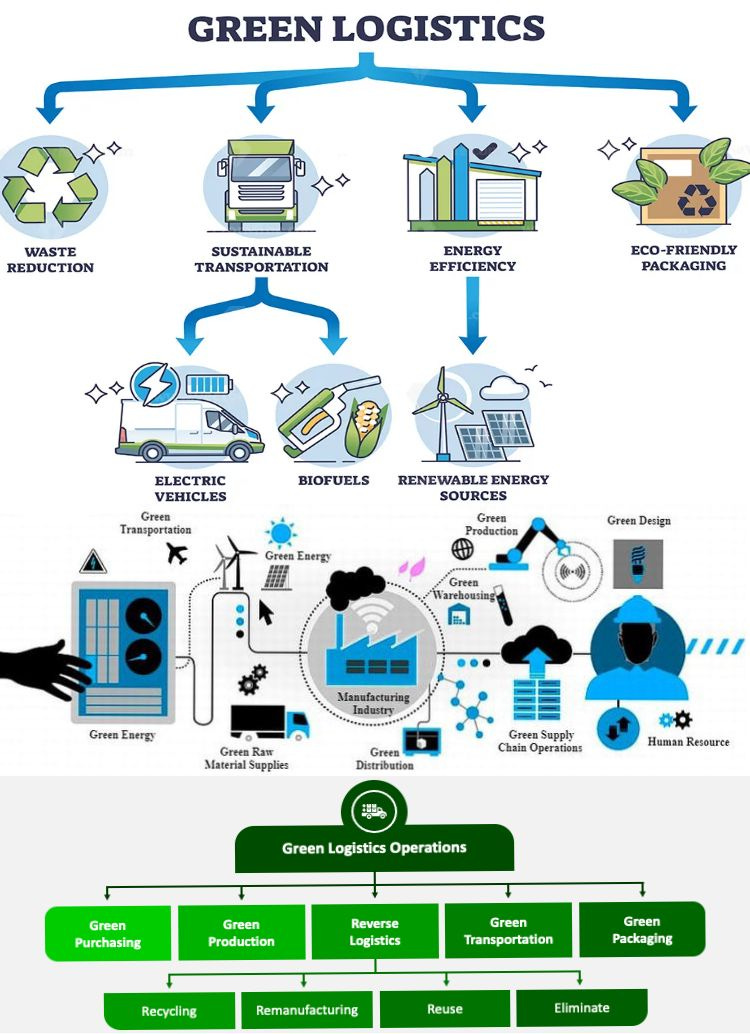Embracing the Future, Green Logistics in the Modern Supply Chain
Paving the Path to Sustainability, The Rise of Green Logistics in Modern Supply Chains
Welcome to the latest edition of Logistics Insider. Today, we delve into the transformative world of green logistics, a crucial shift towards sustainability in the transportation and logistics industry.
Green Logistics : Pioneering Sustainable Supply Chains
Green logistics, also known as sustainable or eco-logistics, involves incorporating environmental aspects into logistics processes and supply chain management.
The aim is to minimize environmental impact while promoting sustainability.
This is achieved through innovative strategies, technologies and measures aimed at reducing carbon emissions, energy consumption, waste generation and other environmental impacts.
Driving Factors in Green Logistics
Corporate Social Responsibility (CSR) : The rise in CSR activities among logistics companies plays a significant role in driving the green logistics market. Firms are increasingly acknowledging their environmental responsibilities and are taking proactive steps to reduce their carbon footprints.
Adoption of Electric Vehicles (EVs) : The logistics industry is witnessing a surge in the adoption of EVs, which significantly reduces emissions and contributes to cleaner transportation methods.
Challenges and Opportunities
Dependency on Fossil Fuels : Despite advancements, the logistics industry remains heavily dependent on fossil fuels, which poses a significant challenge to achieving full sustainability.
Environmental Consciousness : Growing environmental awareness among end-use industries presents lucrative opportunities for green logistics. Companies are increasingly seeking sustainable options, driving demand for green logistics solutions.
Market Segmentation and Regional Insights
The global green logistics market can be segmented by end use, business type, mode of operation, and region:
End Use : The market is divided into military, commercial, and UAV (Unmanned Aerial Vehicle) applications.
Business Type : It encompasses warehousing, distribution, and value-added services.
Mode of Operation : Segmentation includes storage, roadways distribution, seaways distribution, and others.
Regions : The market is analyzed across North America, Europe, Asia-Pacific, and LAMEA.
Asia-Pacific : A Leader in Green Logistics
In Asia-Pacific, countries like China, Japan, India, and South Korea are at the forefront of adopting green logistics practices:
China : As a major economy, China actively promotes green logistics to tackle environmental challenges, setting benchmarks for others in the region.
Japan : Known for its green technology, Japan has seen logistic companies widely adopting hybrid and electric vehicles. Notably, Yusen Logistics Co. Ltd. launched the Yusen Book-and-Claim service in April 2023, utilizing sustainable aviation fuel (SAF) for air freight forwarding to foster sustainable growth for its customers.
Conclusion
The transition to green logistics is not just a trend but a necessary evolution in the logistics industry. By embracing sustainable practices, logistics companies can significantly reduce their environmental impact, meet CSR goals, and cater to the growing demand for eco-friendly solutions. As we move forward, the integration of green logistics will be pivotal in shaping a sustainable future for global supply chains.
Thank you for tuning in to this edition of Logistics Insider. Stay tuned for more insights and updates on the ever-evolving logistics landscape.





